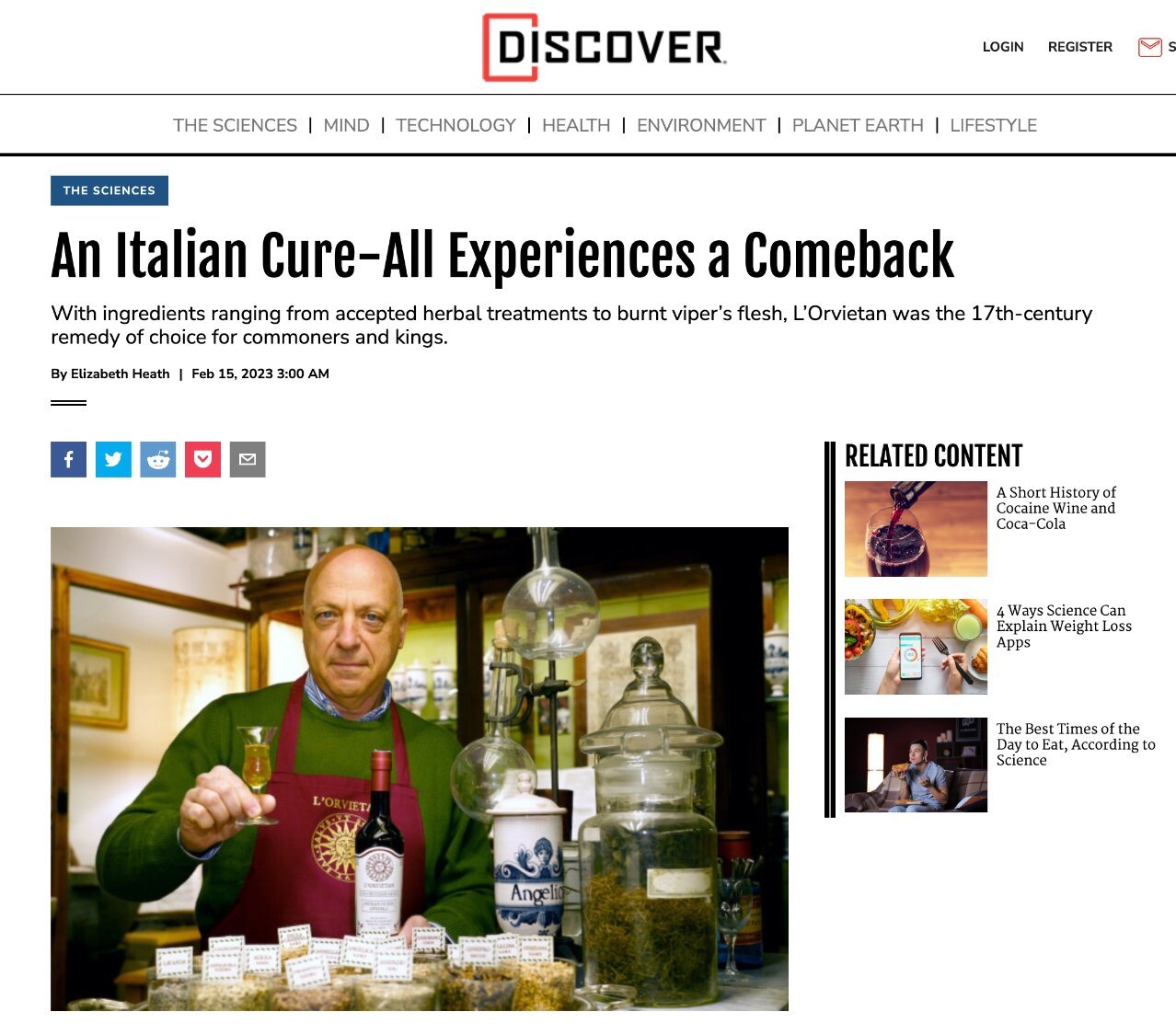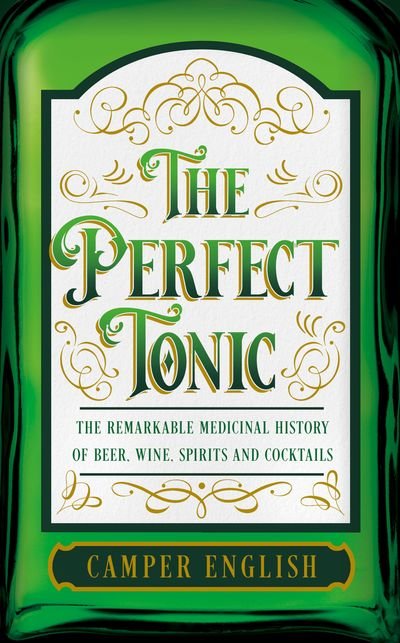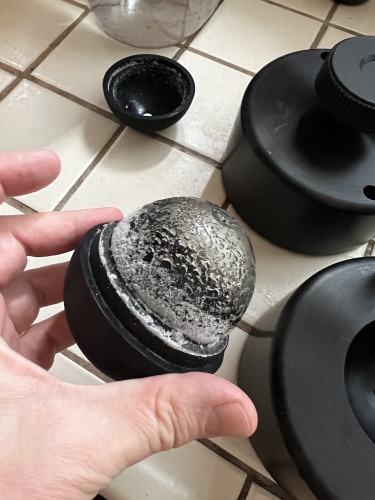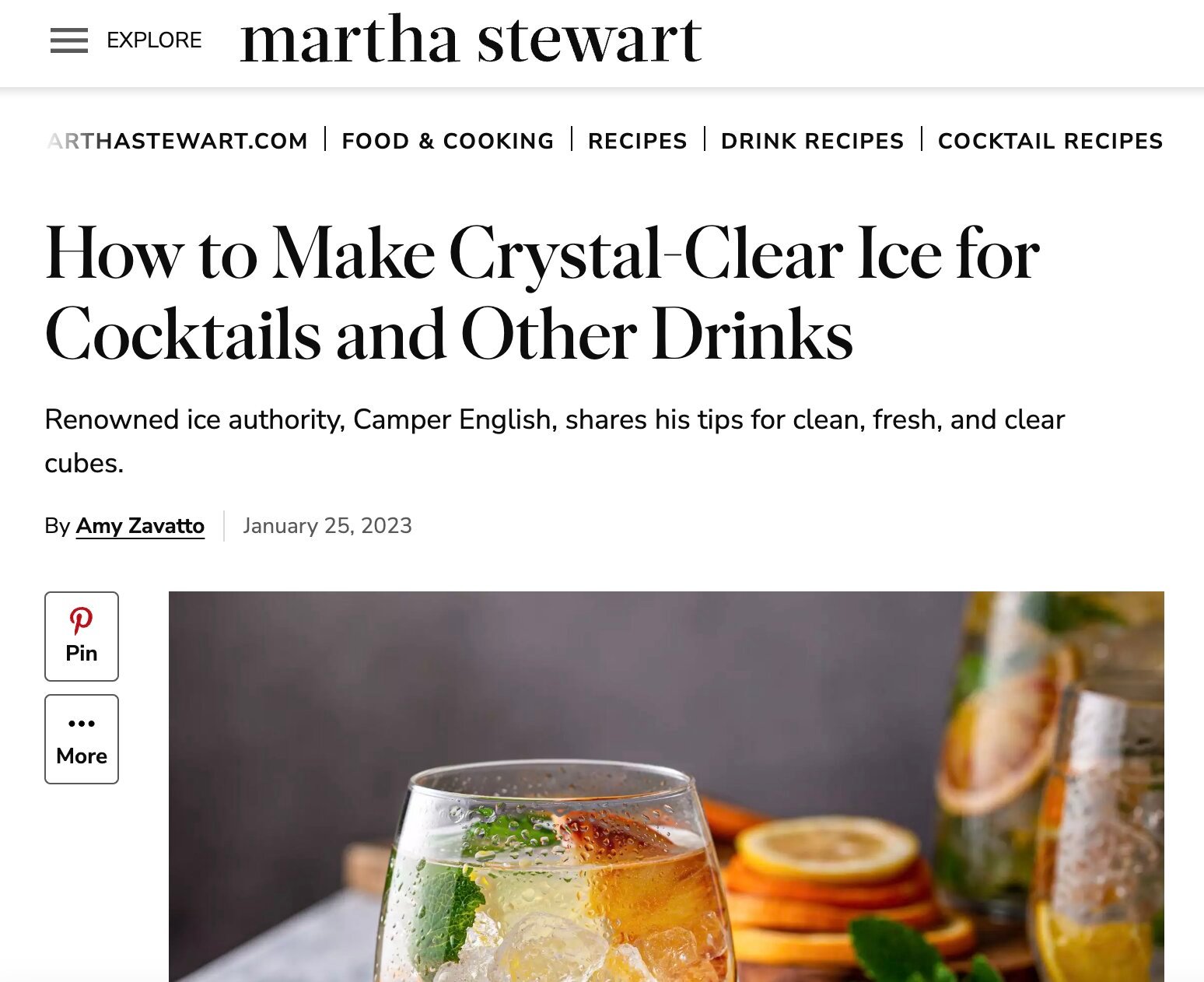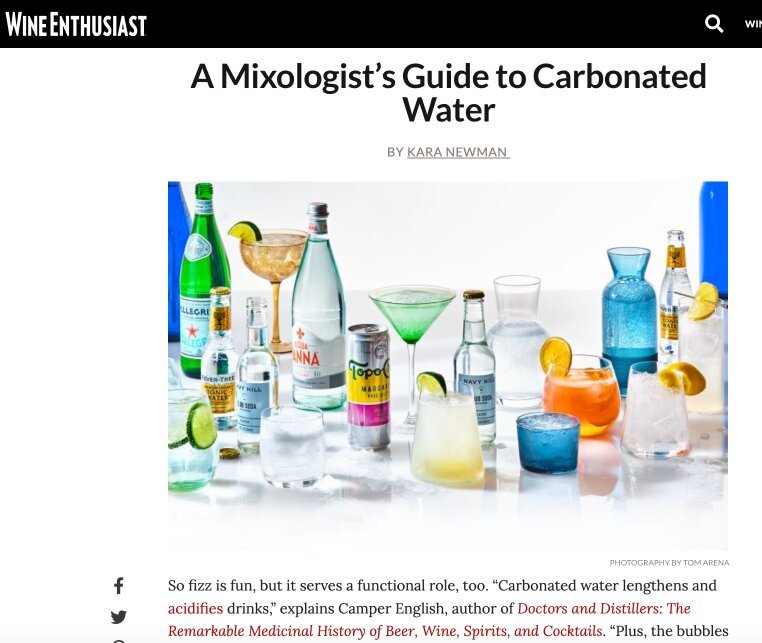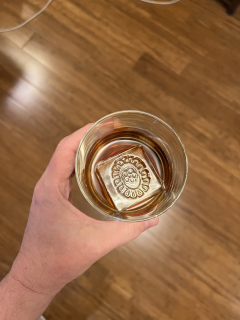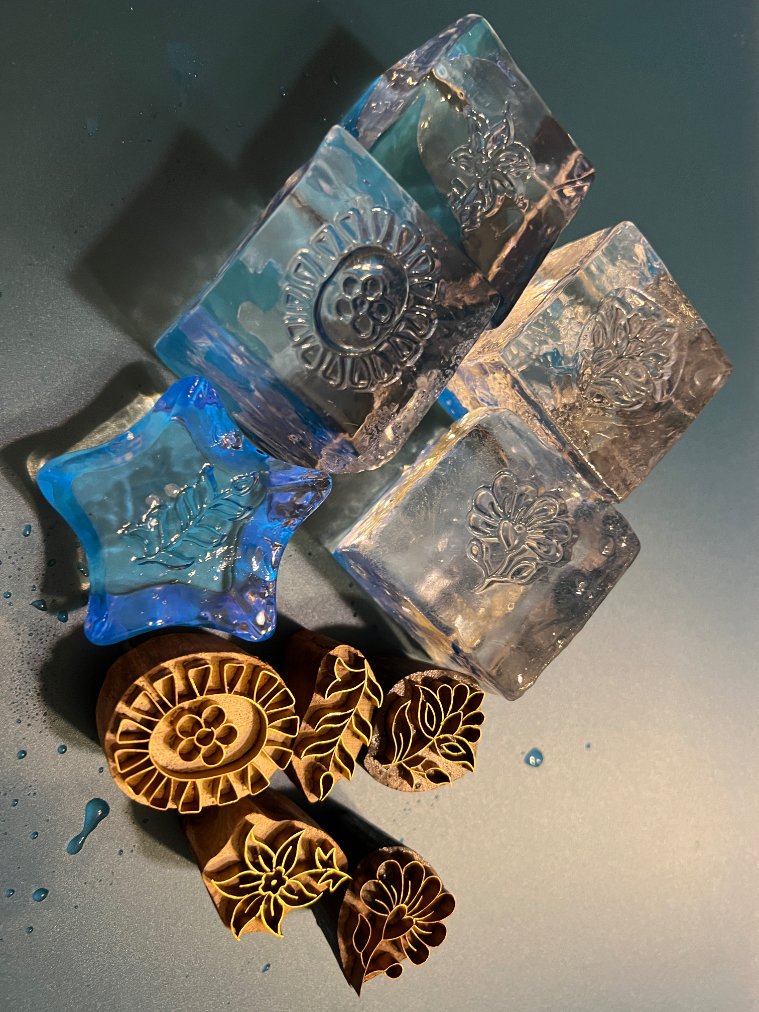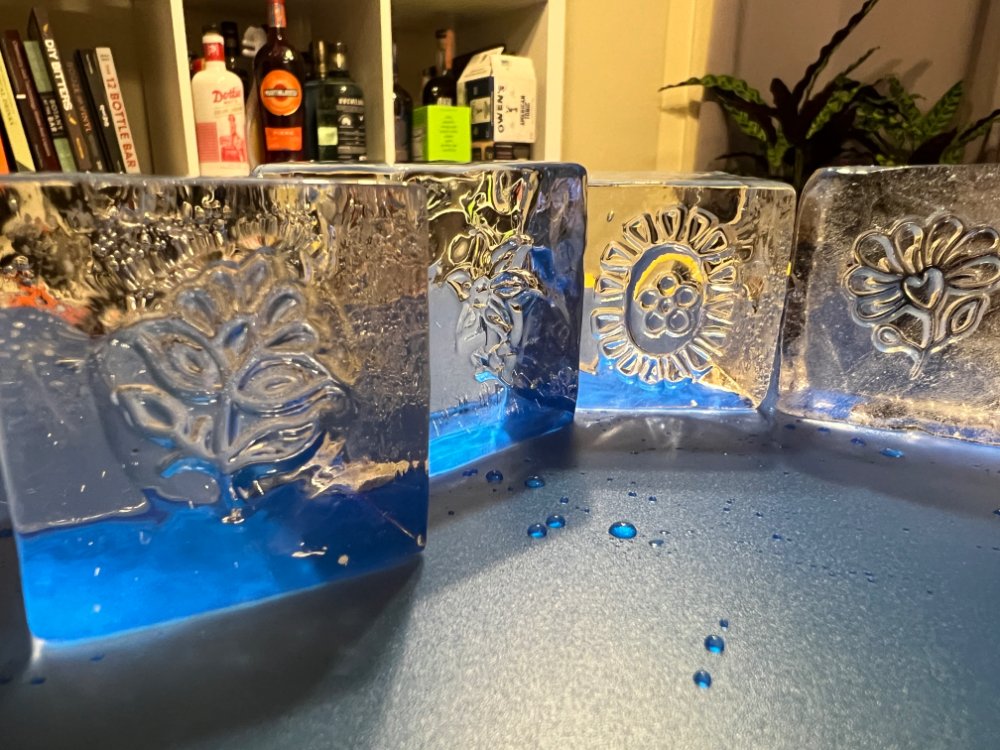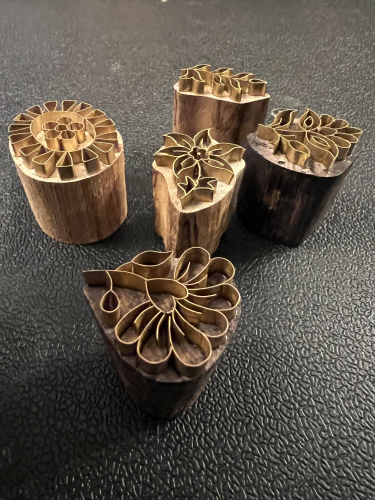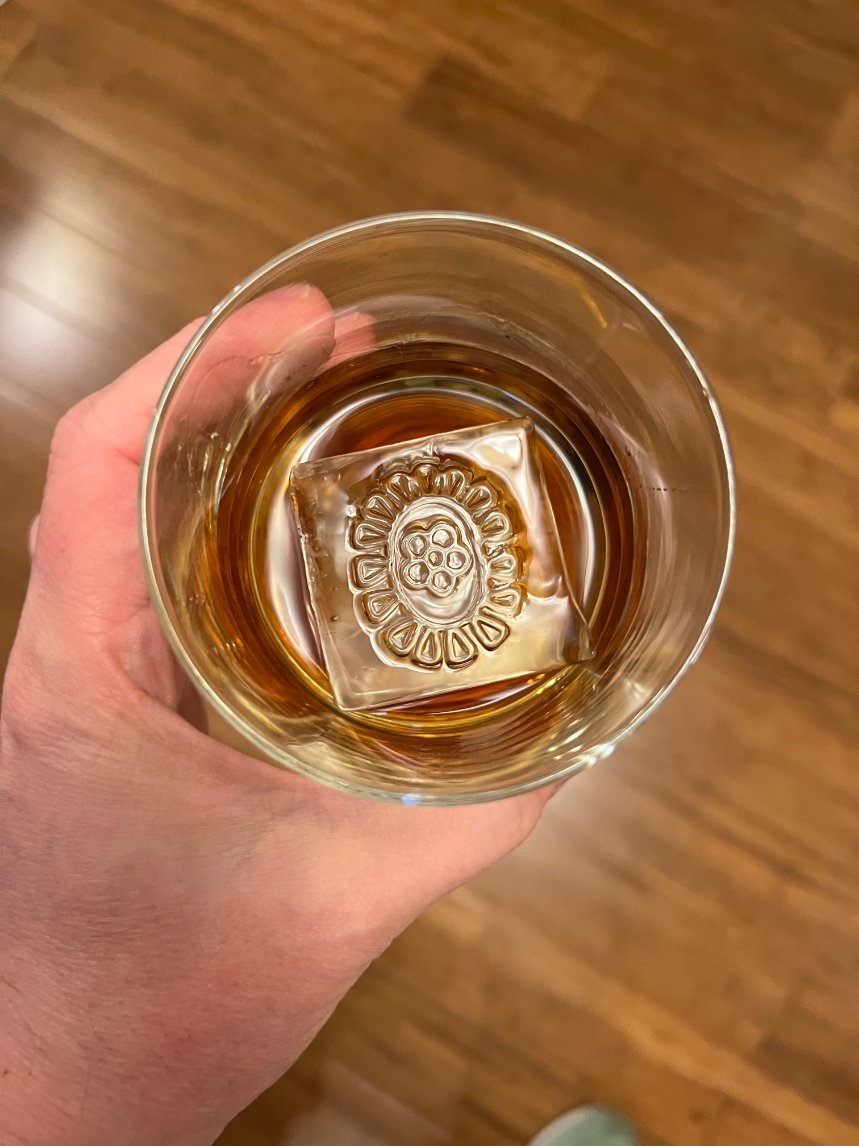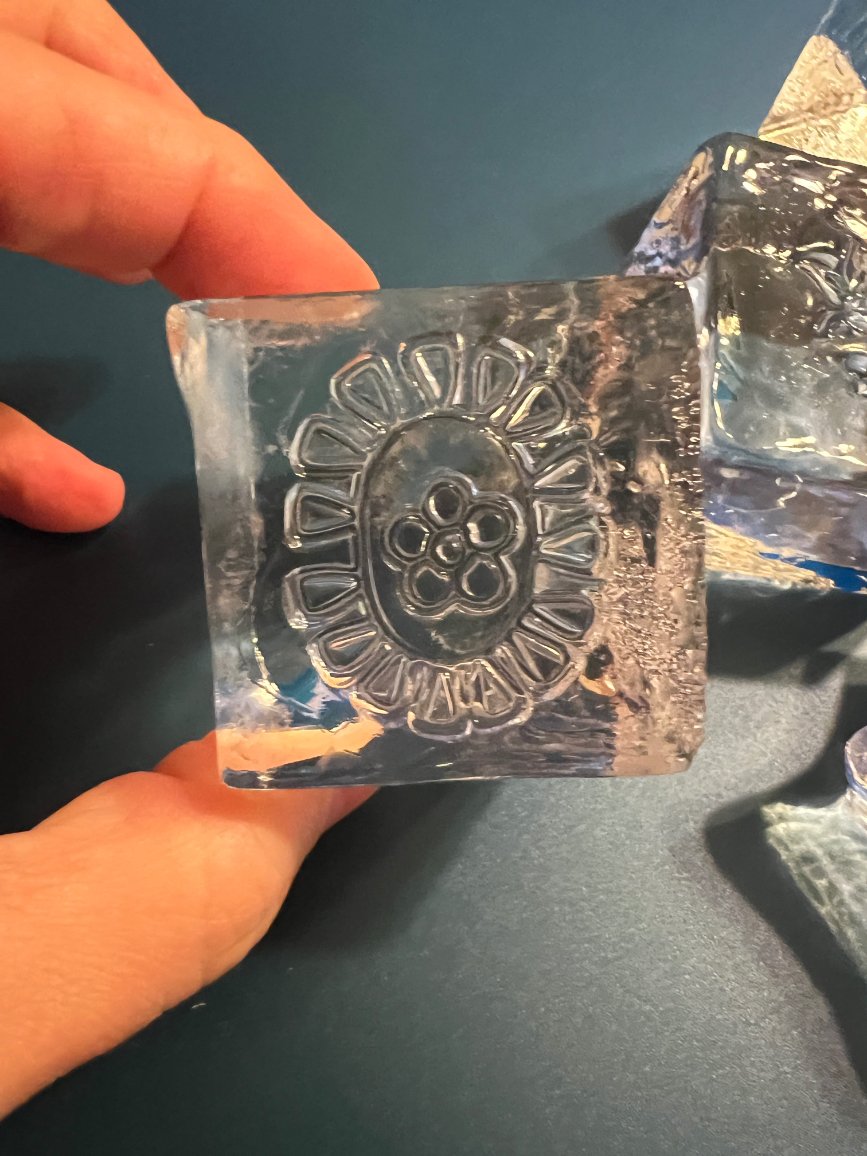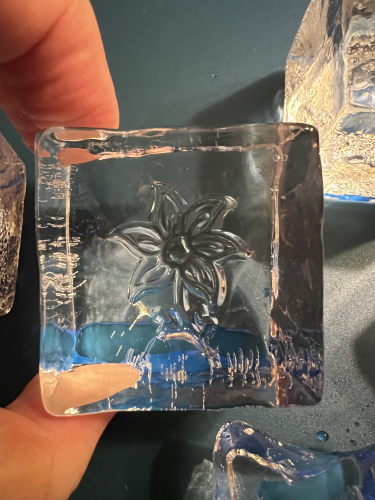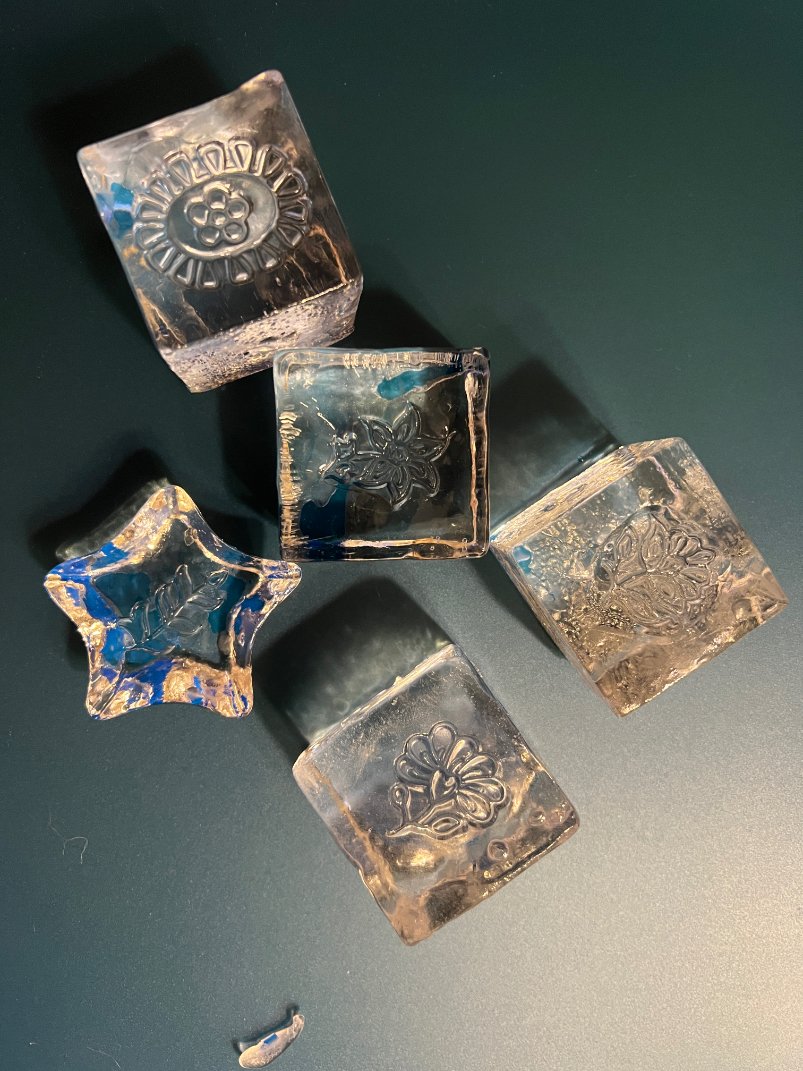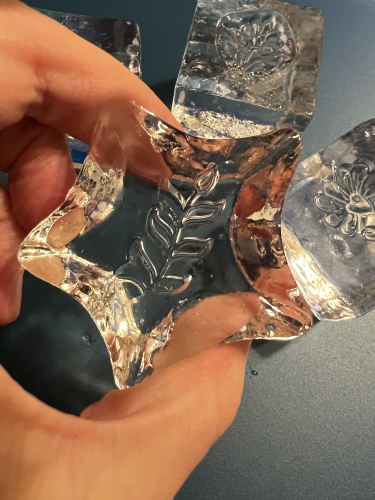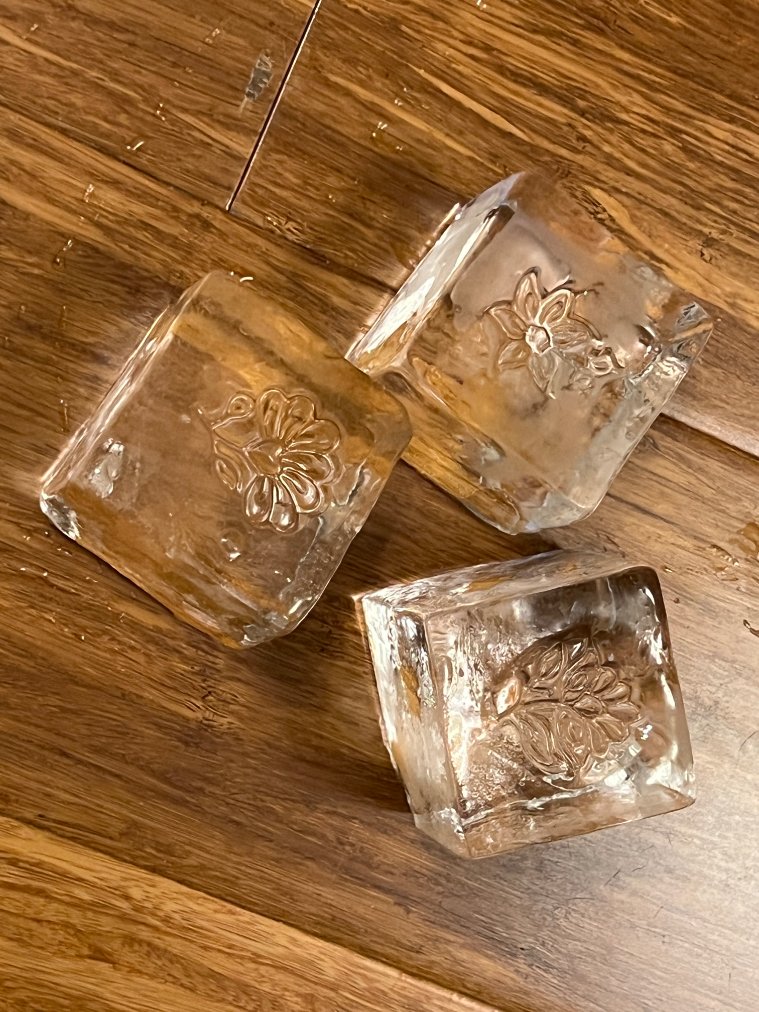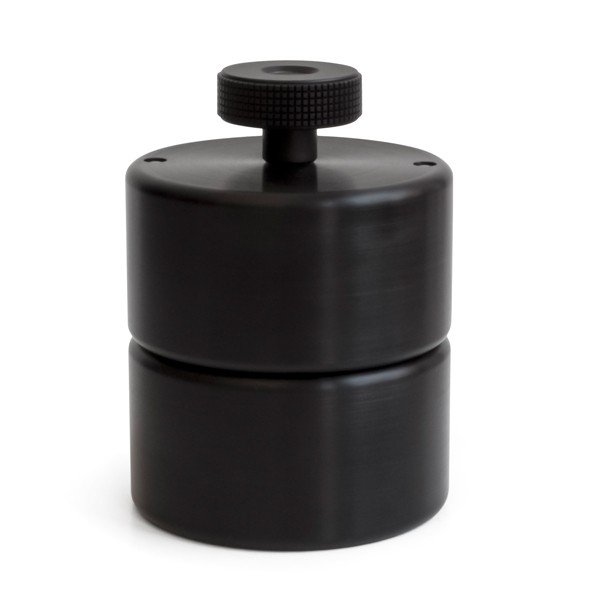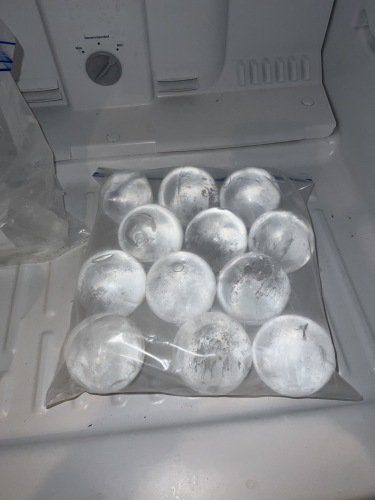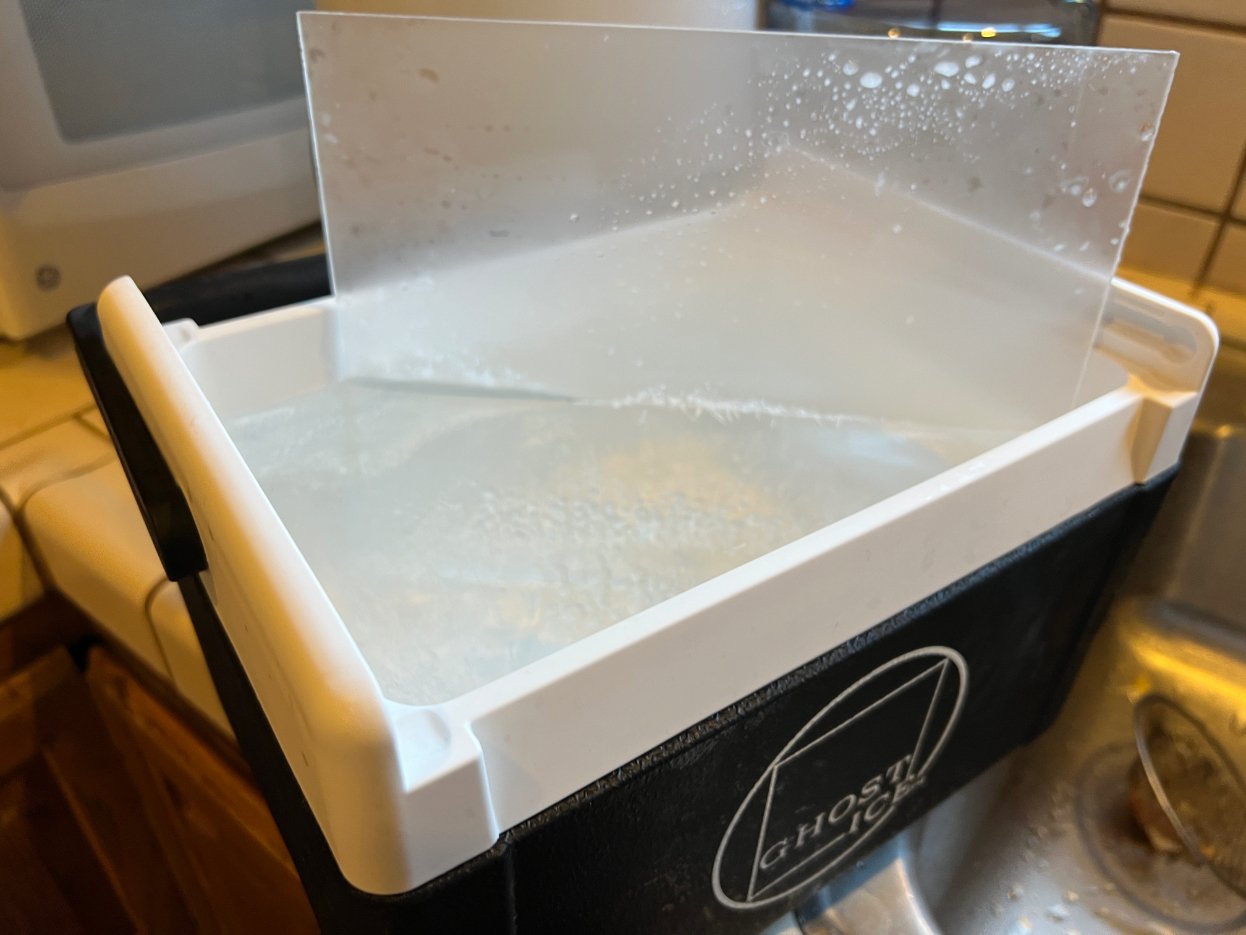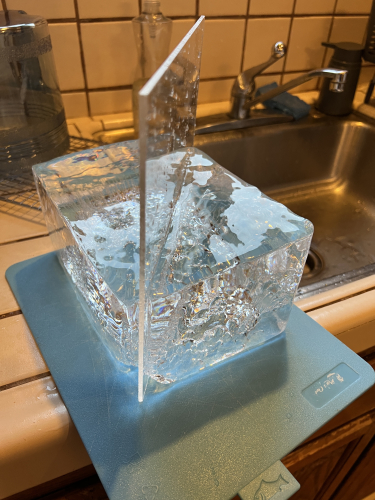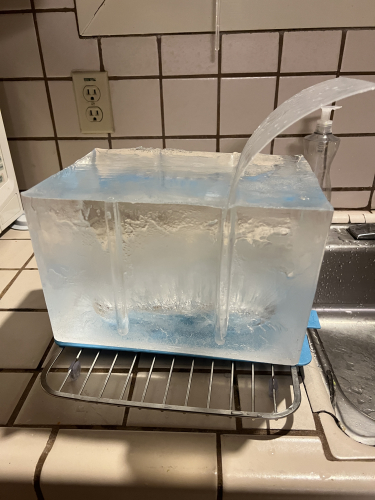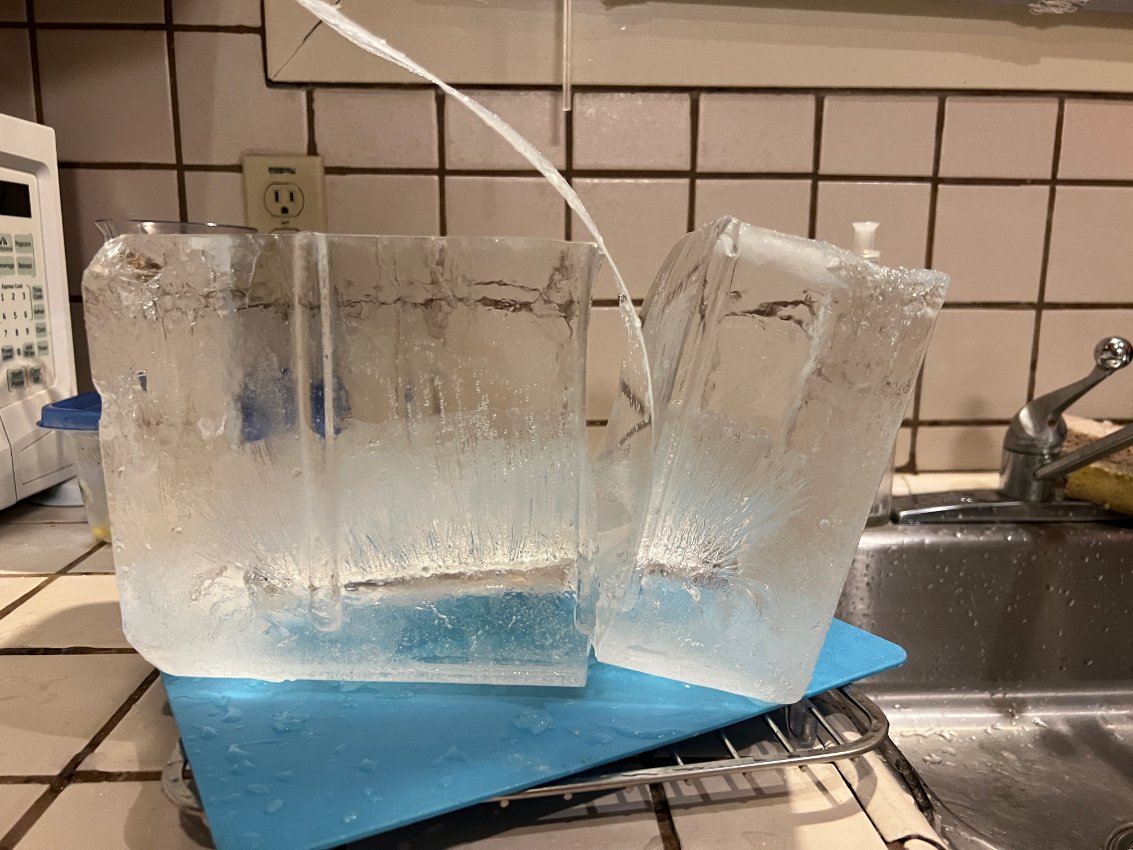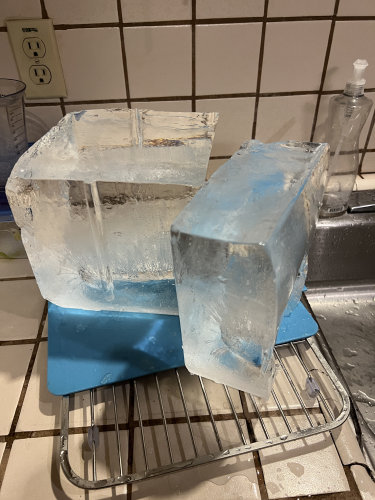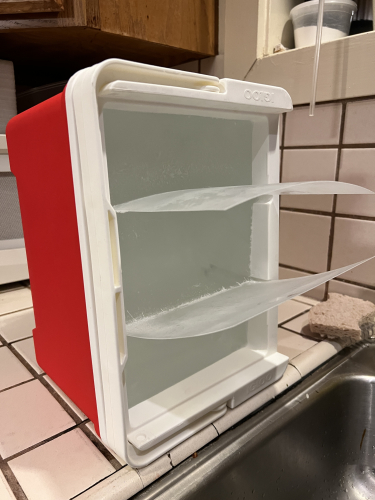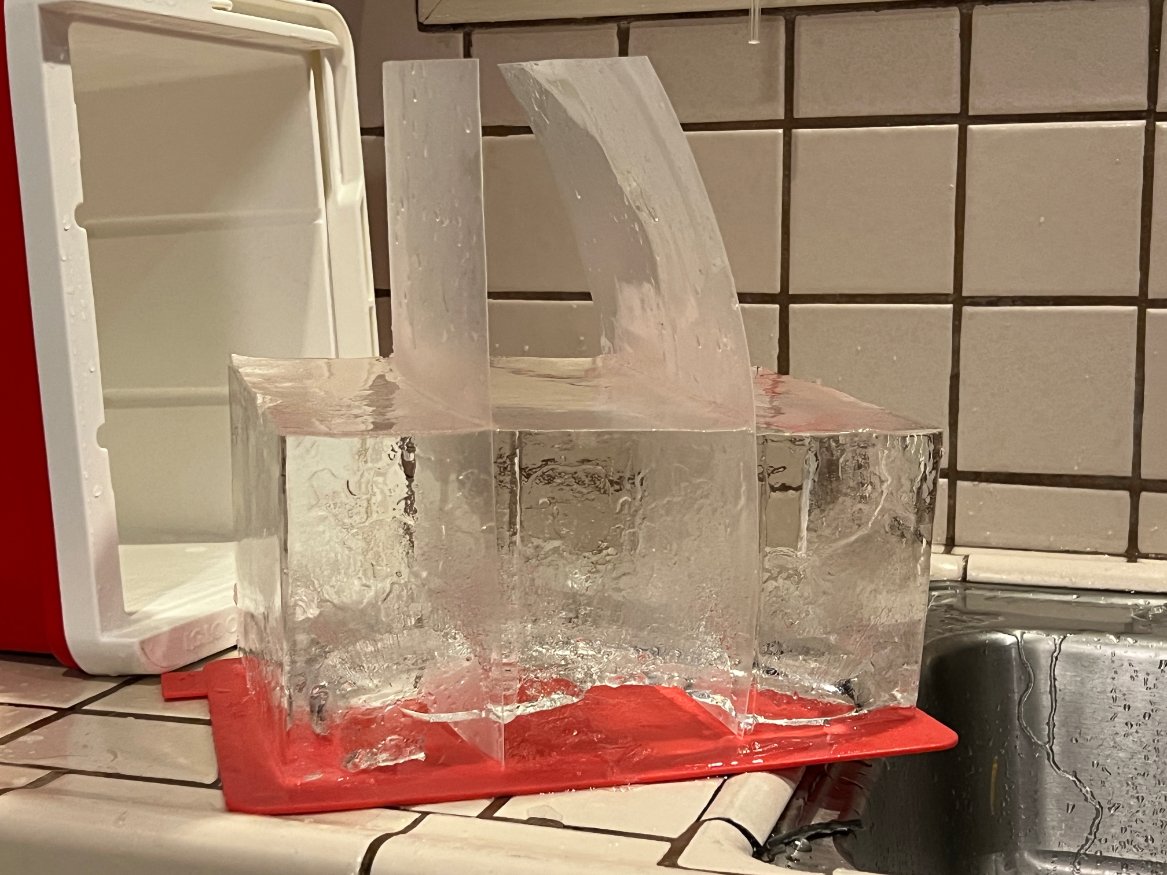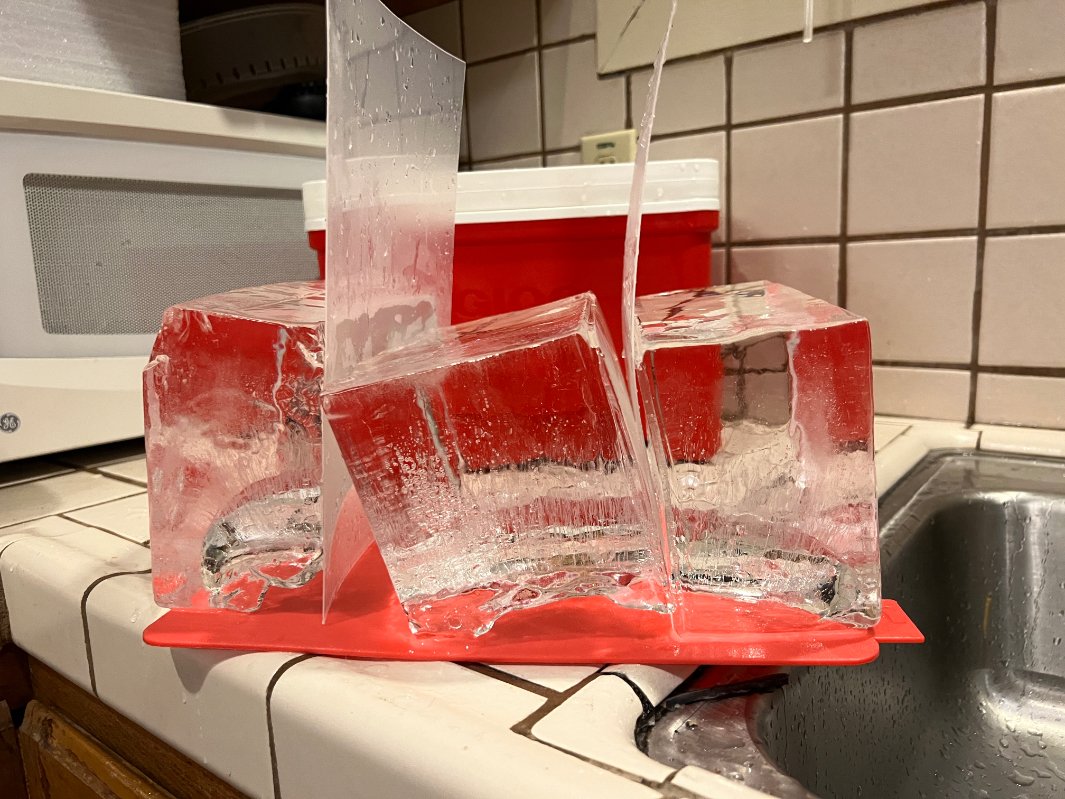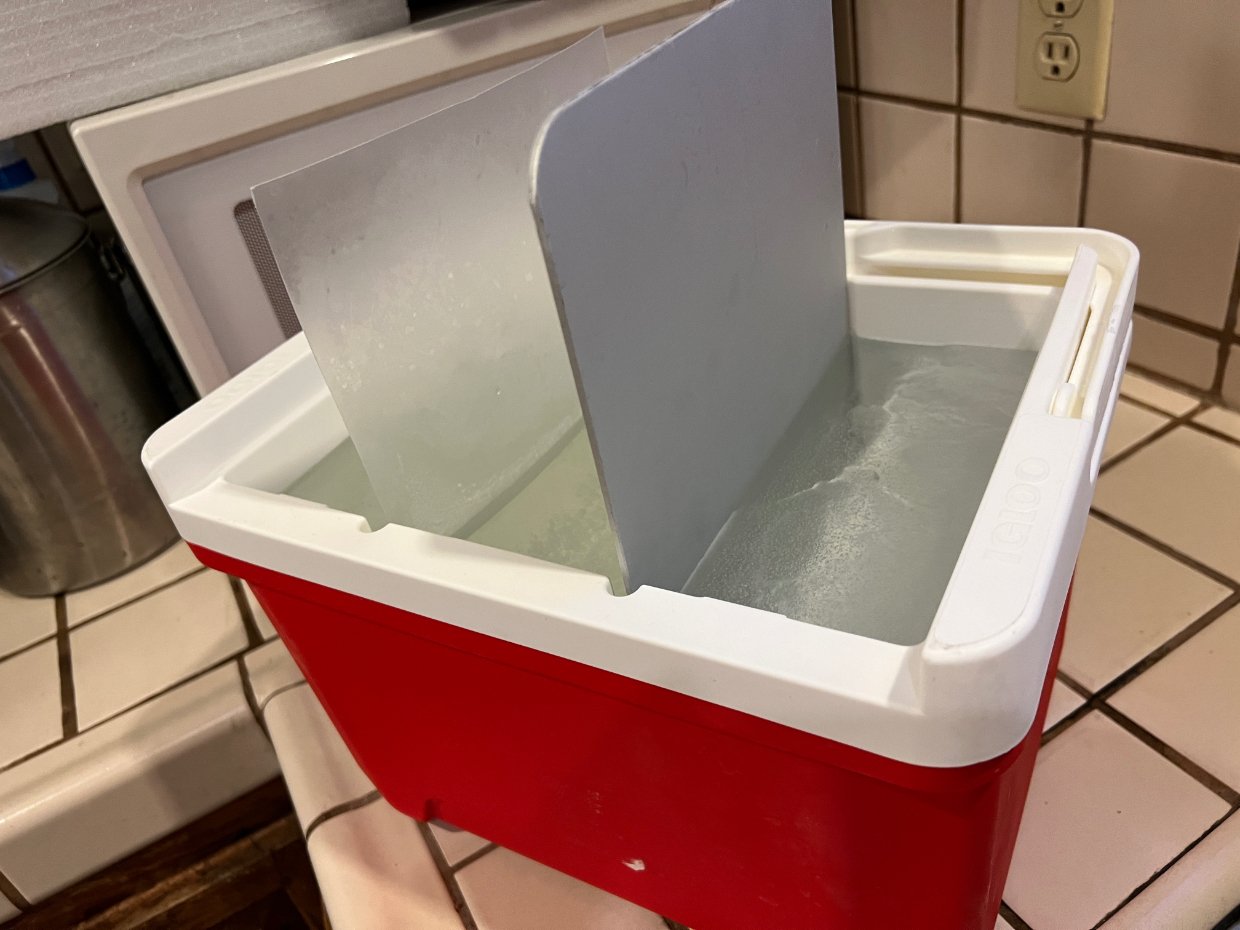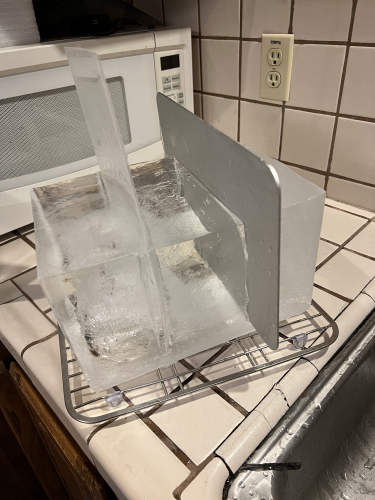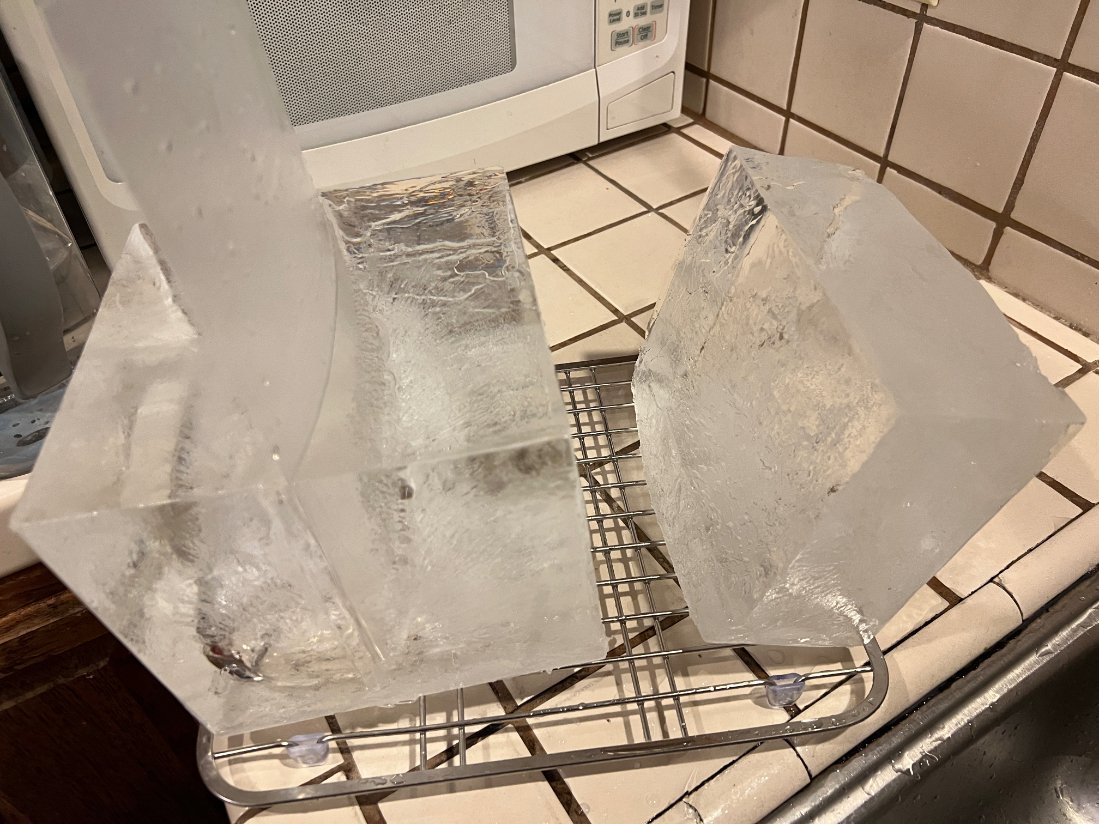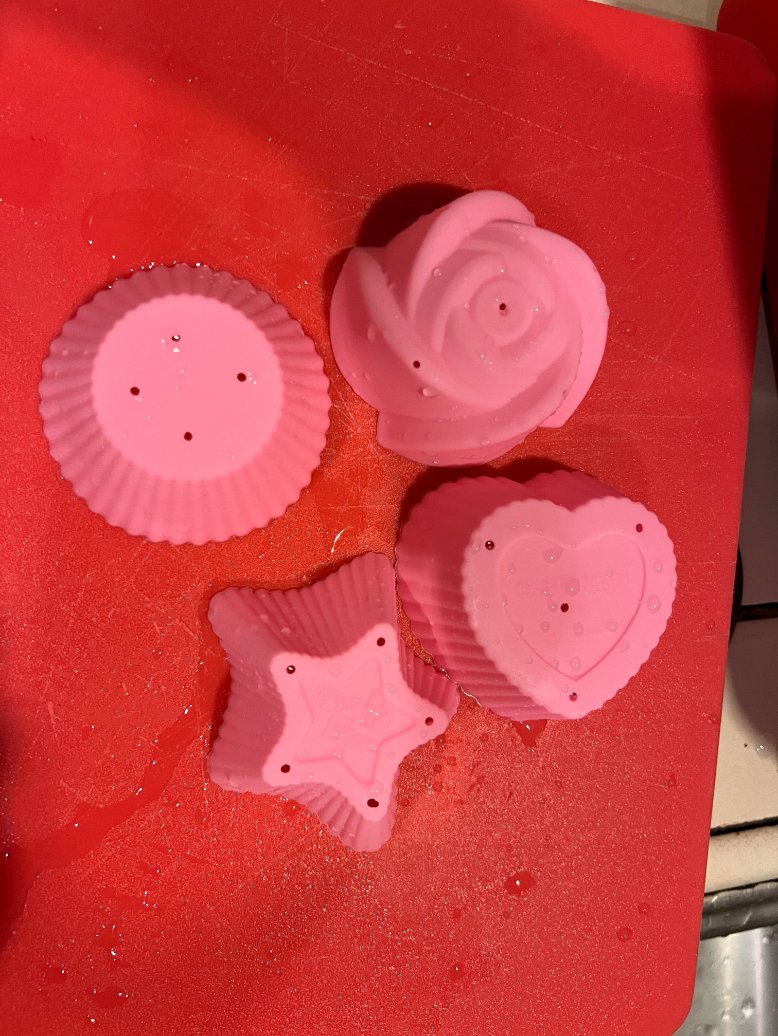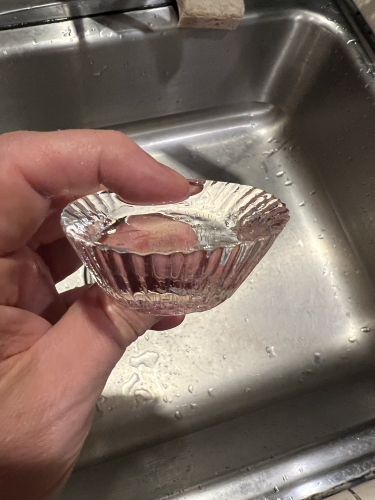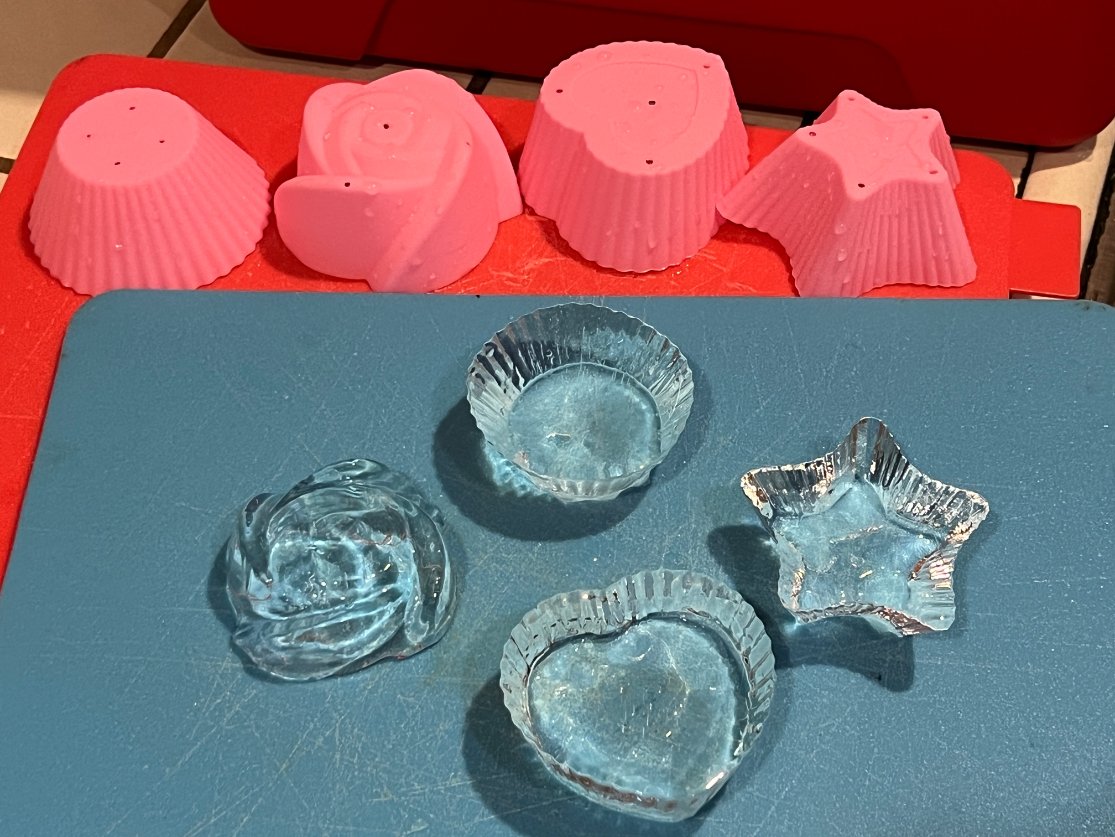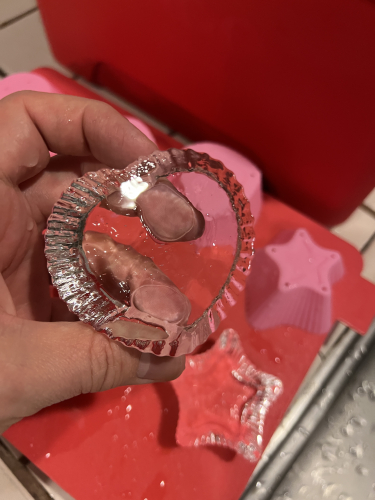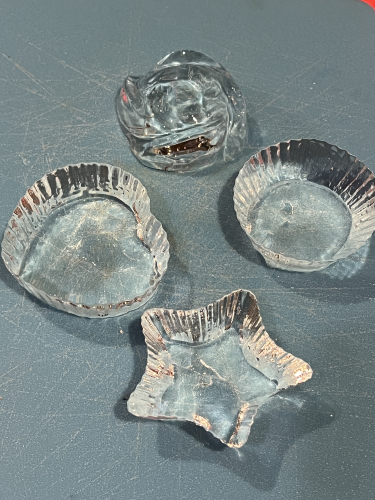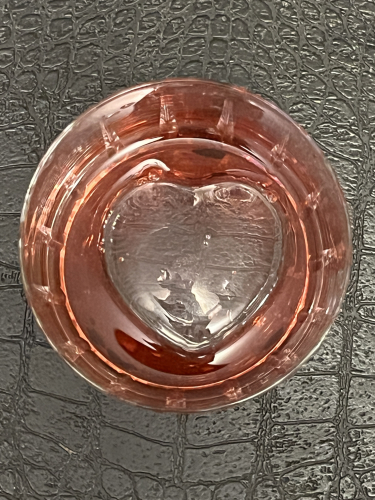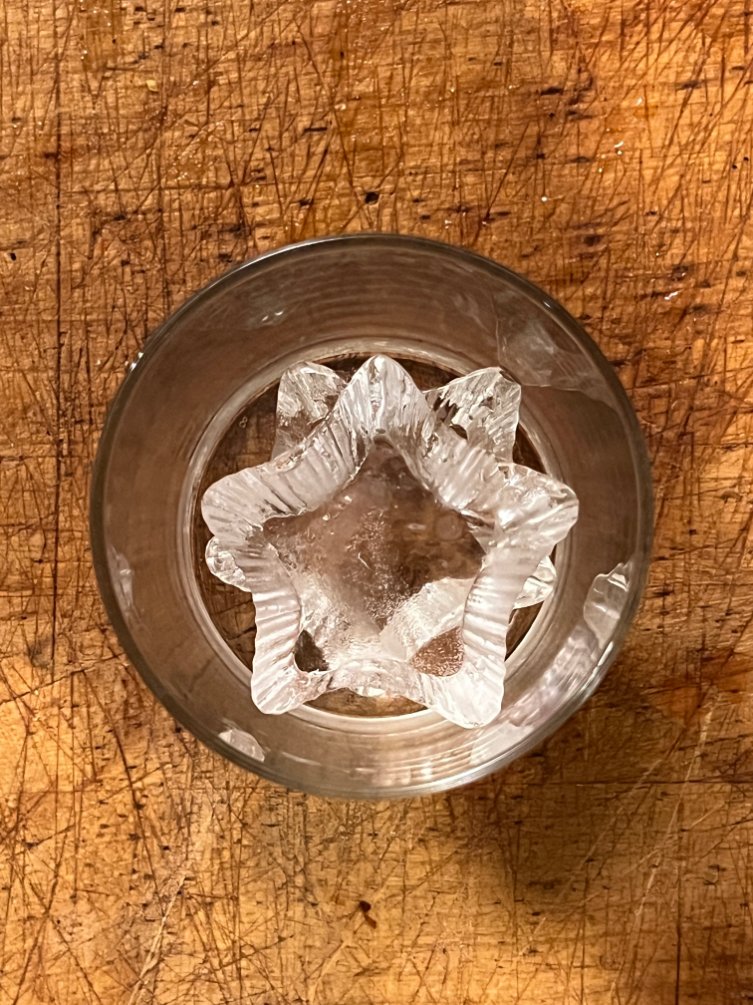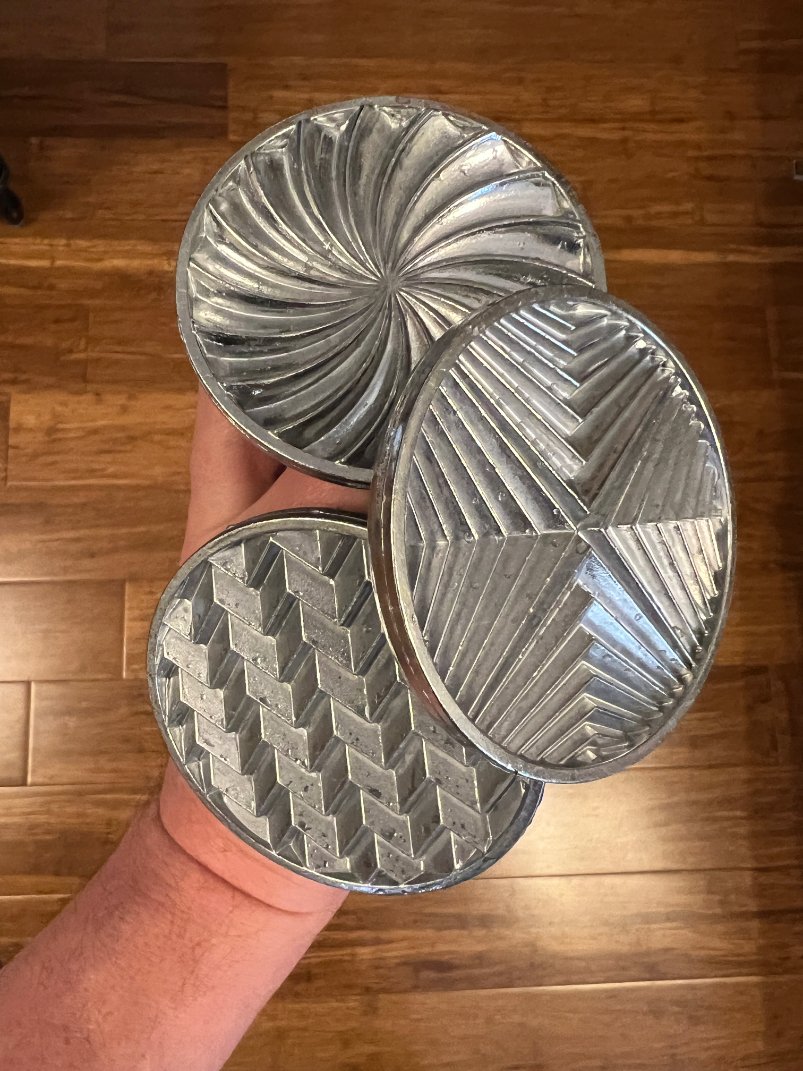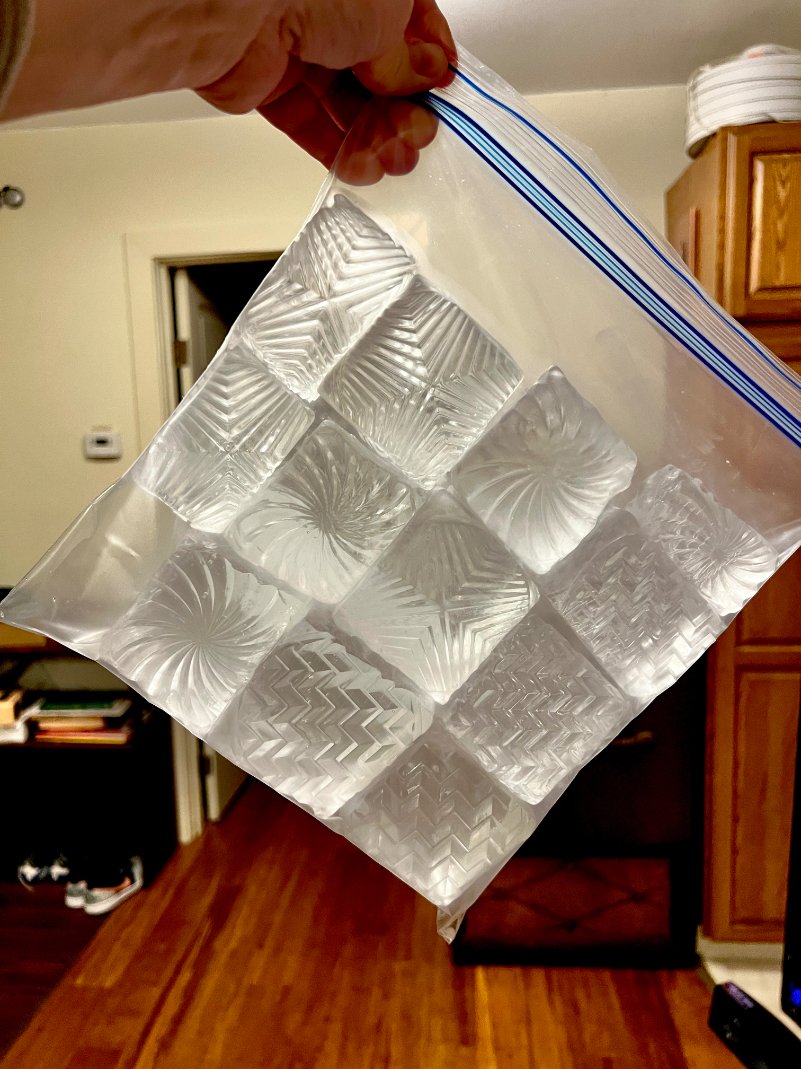Here's an interesting problem and solution: James Hogarth reached out to me to describe the following. He is using water filtered with a Zero Water filter in a clear ice system. This filter removes all the major dissolved solids in the water, and it comes with a little TDS meter to verify it. But the supposed-to-be-clear ice that comes out from this water has streaks remaining, but regular tap water doesn't.
My tap water has a terrible taste, however, when I freeze tap water [in the Wintersmith’s Phantom] it does freeze perfectly clear. The bad news is that if I then thaw the water it still retains a bad taste. It is improved but still not good.
Curiously, the ZeroWater filter comes with a Total Dissolved Solids meter, and while not the most sophisticated meter in the world, it reads around 110-120 on tap water and perfect 0 for the thawed water.
So right now I either get great tasting ice with air bubble streaks, or perfectly clear ice that tastes terrible.
Even distilled water gave me streaks of air bubbles. My freezer was always right around 0 degrees, and multiple different molds, no mater what, boiled or not, still got streaks.
He theorized that his water was actually freezing too fast without salt and other minerals in it that would naturally slow the rate of freezing.
So to test the theory, he tried adding table salt to TDS 0 water – and it was successful! He added a concentrated salt solution to the rest of the water to try to bring it around 135 ppm before freezing.
I know that ice crystals will push out salt molecules as the ice crystalline structure does not have room for it. Freezing water is one method for desalination of sea water for this reason, it just isn’t very energy efficient.
The melted ice tastes just as good as the filtered water. From the top half [the clear part], the meter reads 6 and the bottom half 163.
So after a few more batches of ice, and a few bottles of whiskey, it seems that around 140-180 ppm of table salt in the ZeroWater is ideal. I get crystal clear ice, and when I melt the ice and test it, it’s usually 6ppm salt or less.
We knew that freezing water pushes the trapped air and impurities (including the minerals) to the last part of ice to freeze. What's interesting here is that at least in this case, the presence of "impurities" while freezing seems to improve the clarity of the ice, and we can theorize that is because they slow the rate of freezing.
Hogarth later tried other minerals, including mineral drops that are sold to supposedly make water healthier. He found they acted in much the same way, concentrating in the cloudy part of the ice.
Trace Mineral Drops: starting at 204 ppm, melts to 23 ppm. So something is clearly less filtered from directional freezing than salt or calcium chloride. Both of which could be as high as 240-250 ppm and the melted ice would be around 6ppm. I don’t have the tools to tell you what it is though.
So I'll leave this at that. To replicate it, I (or better yet, you) could try freezing two identical quantities of water in identically-shaped insulated trays: one with TDS 0 and one with some dissolved solids.
This might not be an issue if your freezer temperature is higher and closer to the freezing point, but most freezers have maximum temperatures much lower than that for food safety.

